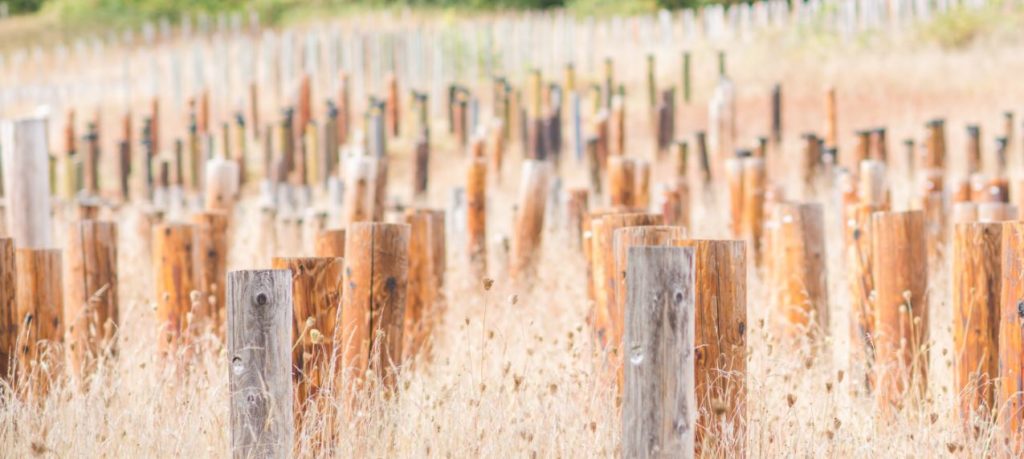Five acres of Peavy Arboretum are filled with utility poles. But why?
“It’s our pole farm,” answers Senior Faculty Research Assistant Jed Cappellazzi. “We are growing them!”

He’s only joking, of course. Cappellazzi and fellow Senior Faculty Research Assistant Matthew Konkler co-facilitate the College of Forestry’s Utility Pole Research Cooperative, and the five acres of poles at Peavy Arboretum only make up a small piece of the cooperative’s unique, world-class research.
The co-op’s membership includes energy, chemical and timber companies from every region of the United States and some parts of Canada. Co-op members are happy to host researchers to study utility poles in use across the country, but there are many external factors affecting poles already in use.
“We don’t always know the history of these poles,” Cappellazzi says. “And they’re vulnerable to more external stimuli including things like car accidents. If something like that happened, we would lose all of our replication with the study we’re running.”
Konkler says that the five acres at Peavy Arboretum is different and well protected.
“That’s where we’re really free to experiment,” he says. “Our industry partners really appreciate the space because the weather at the Arboretum causes poles to deteriorate pretty quickly. So, even in the long-term studies we’re running, we’re able to get answers to their questions relatively quickly.”
The Arboretum has about 30 active studies. Studies began at that site when the first post installed on January 7, 1928. Some of the older poles still stand, although they are not being studied.
The utility pole co-op was founded in the 1980s and charged with developing fumigants to help preserve utility poles. Since then, its focus has changed and it now addresses a variety of wood related issues that improve the performance of wood, allowing poles to last longer and make utilities more competitive.
Assistant Professor Gerald Presley joined Oregon State in 2019 to oversee the co-op. He says its future is exciting.
“It’s great to be in a position to do applied research with wood-based products,” he says. “Wood utility poles are an essential part of our national infrastructure and have advantages over steel alternatives. Not least among these is that they are a renewable resource grown and manufactured right here in Oregon and throughout the Pacific Northwest.”
Chemical leaching and fire mitigation are a few of the next big issues in the industry that the co-op plans to tackle in Peavy Arboretum and beyond.
“When it comes down to it, we’re trying to protect the investment of wood poles,” Konkler says. “We do our best to look comprehensively at the forest and wood products industry to understand everything that goes into creating, establishing and maintaining these poles.” •
A version of this story appeared in the Spring 2020 issue of Focus on Forestry, the alumni magazine of the Oregon State University College of Forestry. Learn more about College of Forestry research facilities and collaborations.

